Top 11 Accessible Paris Attractions
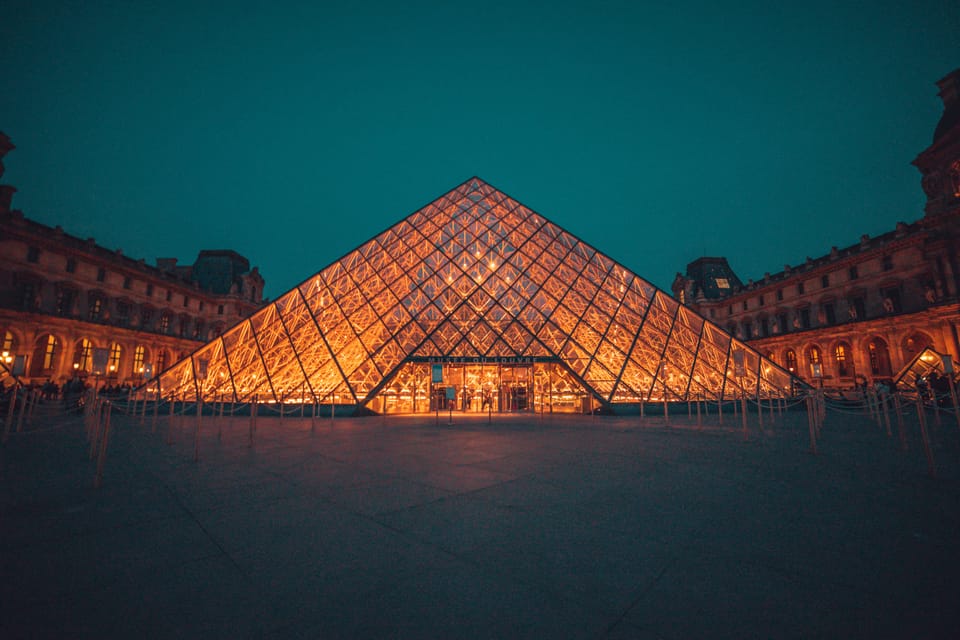
Table of Contents
Introduction
Paris, known for its beauty, aesthetically pleasing architecture, and a high influence in the artistic sphere, is one of the most visited cities in the world. You can't narrow down a single element that Paris is known for. The City of Lights, City of Love, City of Art... I could go on. It's emblematic of so many things.
And it also happens to be accessible. The vast amount of accessible museums, structures, monuments, and attractions make it an attractive city for your next trip. In this article, we will cover some accessibility details you should be aware of and highlight the best wheelchair accessible attractions in Paris.
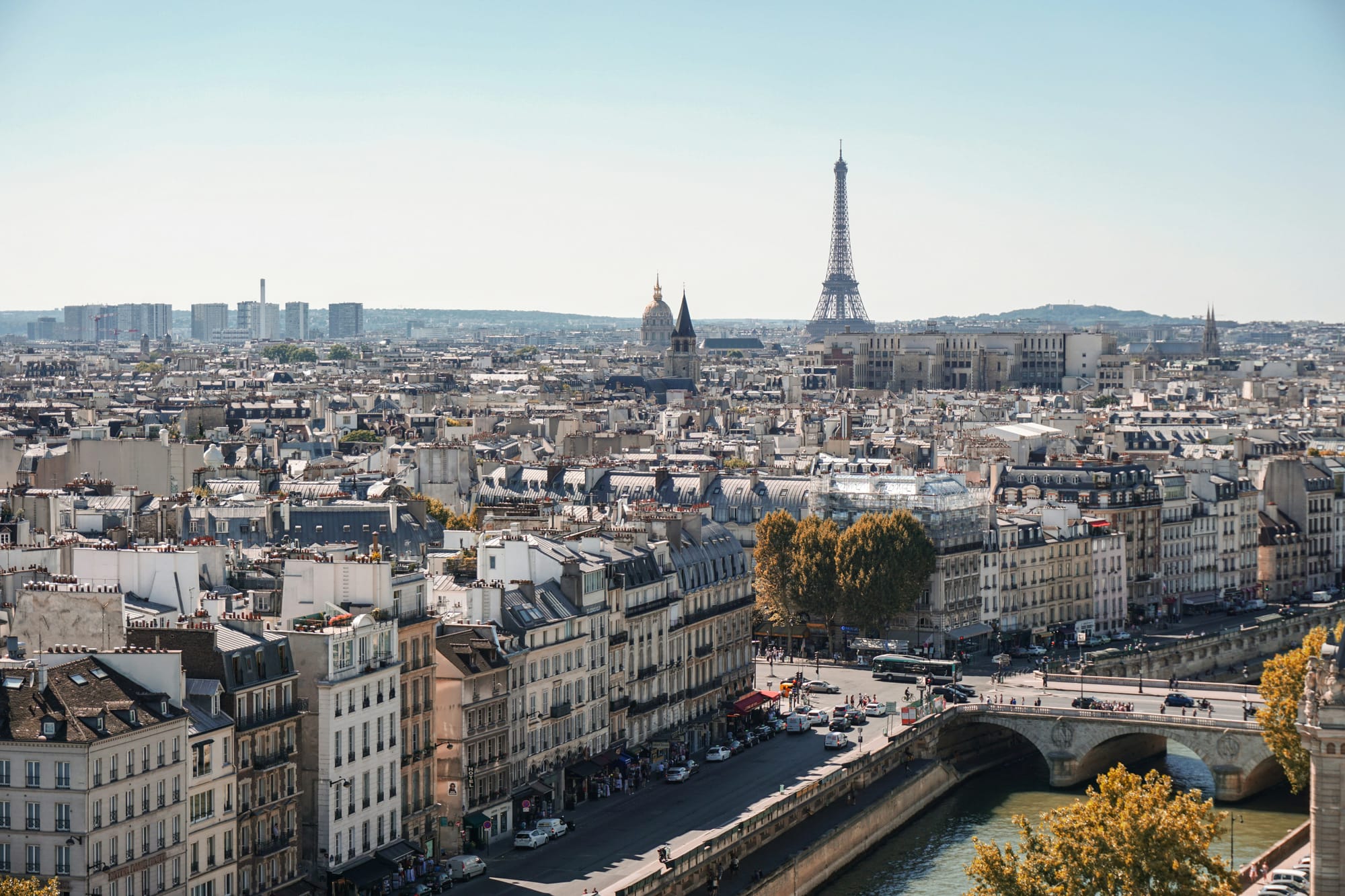
Is Paris Accessible for Wheelchair Users?
Paris is certainly accessible, although there is noticeable room for improvement. With the right insights, tips, and knowledge, wheelchair users and people with limited mobility can have an enjoyable trip. Lets go over some aspects travelers should be aware of, and then highlight accessible attractions that are must-visits in Paris.
Tips on How to See Paris in a Wheelchair
Navigating the Streets
Wheelchair users will find the streets and sidewalks fairly easy to navigate with mostly smooth pavement and curb cuts. However, there are a few exceptions. Montmartre and Pigalle, for example, contain cobblestone streets with steep hills and a lot of stairs. In general, Central Paris and most of its arrondissements can be explored by wheelchair. Due to rougher sidewalks and barriers, it is recommended to avoid some of the outskirts neighborhoods of Paris without a companion, specifically the 18th, 19th, and 20th arrondissements.
Is the Metro in Paris Wheelchair Accessible?
Due to it's construction and age, many metro stations are not accessible. The only reliable metro line for accessibility is the Regional Express Network (RER), the commuter train system connecting Paris to suburbs and more distant destinations. It is especially useful for reaching the airports. Roughly 90% of the RER stations have wide access ticket gates, where wheelchair-users can access the trains via a mobile gangway. This will be setup by transport staff, so make sure to request this service upon entering the station.
Keep in mind that the Paris metro can be confusing at times, due to it's extensive network and routes in and out of the city. For more information on accessibility of RER stations and a map the stops, click here.
Accessibility of Paris Buses
The bus network is extensive and complements the metro. Buses are useful for reaching areas not covered by the metro and offer a different view of the city. For accessibility, the bus system is highly recommended to get around as they feature large entry doors and are adapted for individuals with reduced mobility. Equipped with wheelchair lifts and boarding areas absent of obstacles, the bus system is a reliable solution for traveling around Paris.
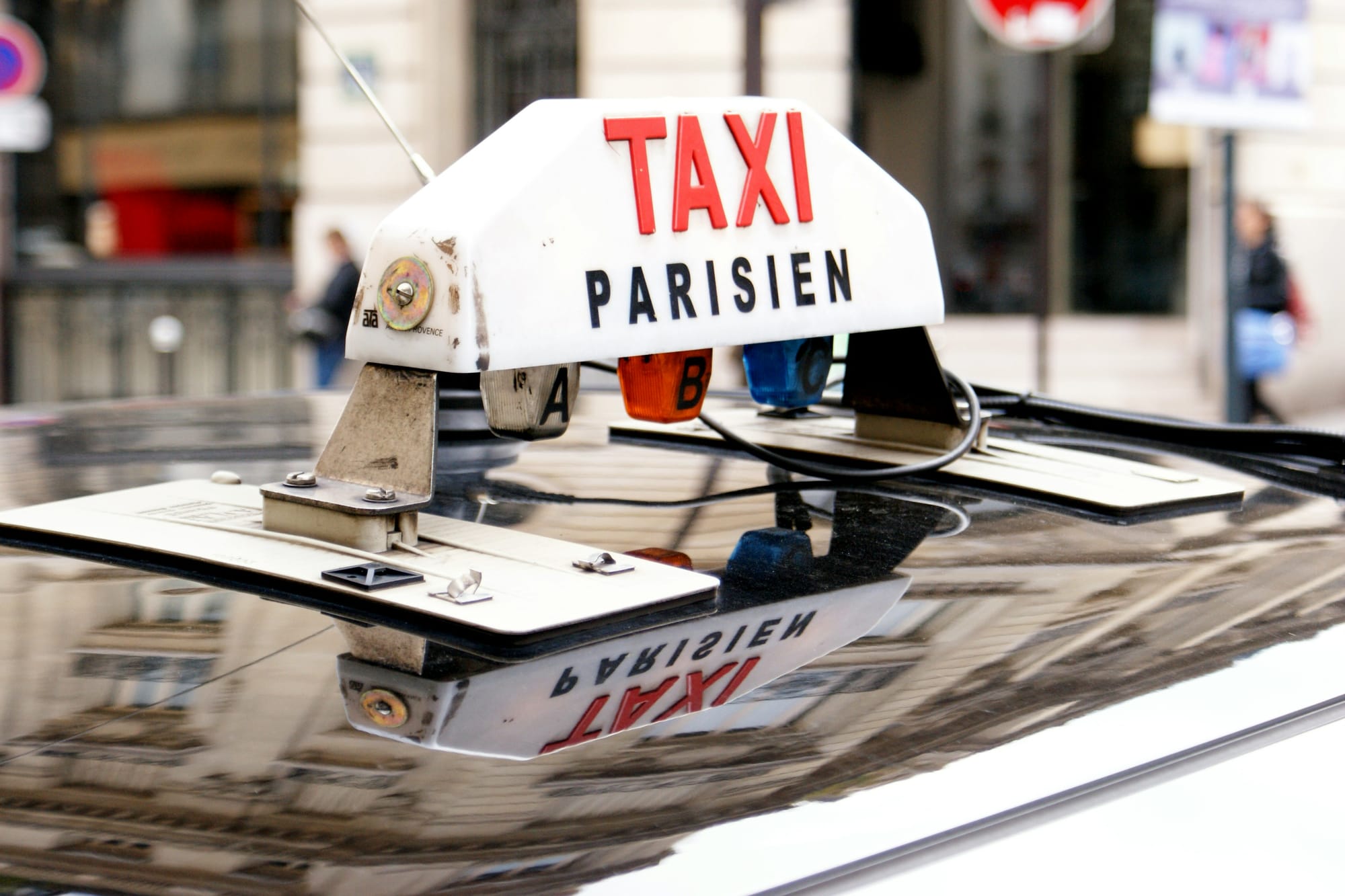
Accessible Paris Taxis
There are two local taxi companies that offer wheelchair accessibility: G7 taxis and Taxi PMR. Both companies have fleets that are equipped with ramp access and trained drivers for assisting individuals with physical disabilities. Using a taxi service in Paris can be more expensive than public transportation, but they run 24/7 and can easily be hailed on the streets or at designated stops.
Research Before You Go
Make sure to research the attractions you want to see before you go and map out the accessible routes of the metro/bus lines to determine how to get there. Because public transportation can be tricky to navigate in such a large city like Paris, it will help to do meticulous research on the routes beforehand. Finding an accessible hotel near the highlights and things you want to see will add extra convenience.
Top 11 Accessible Attractions in Paris
Paris is filled with accessible attractions throughout the city, from world-class museums to famous monuments, your itinerary can be as packed full as you want.
Le Louvre Museum
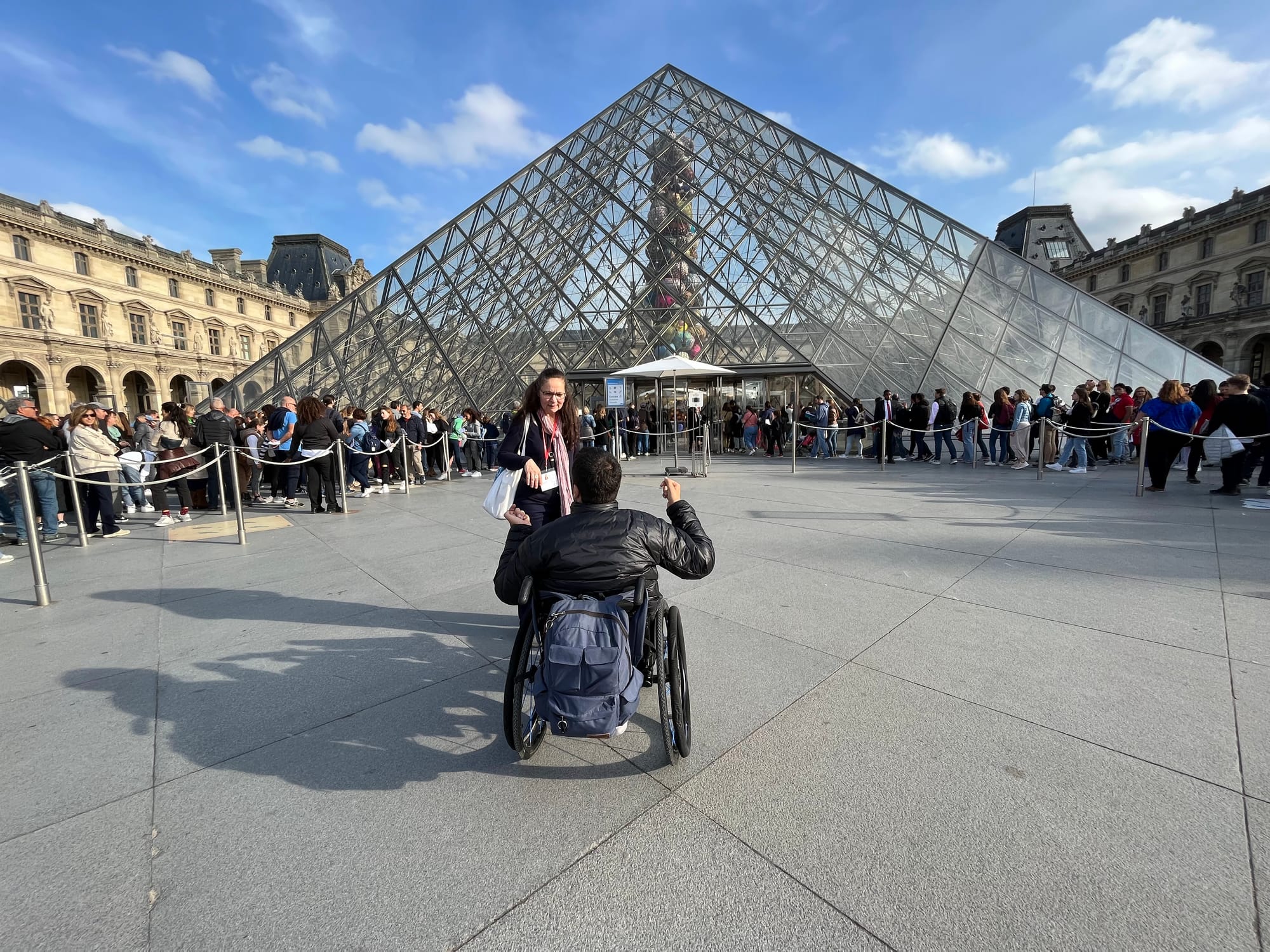
Considered the best museum in the world, Le Louvre is home to the famous Mona Lisa painting by Leonardo da Vinci - perhaps the most recognized painting to ever exist. Remove the Mona Lisa, you still have the richest collection of artwork and artifacts that date back 11,000 years ago. Other highlights include Venus de Milo, The Winged Victory of Samothrace, the Egyptian Collection, and so much more.
Want to know something fascinating? If you were to spend 30 seconds at each piece of art housed in the museum, it would take 100 days to get through the entire collection! To optimize your time there, consider taking a guided, private tour with an expert.
Le Louvre is accessible to people with disabilities and the museum provides several additional facilities and services such as loans of folding chairs, rubber-tipped canes, and hearing loops. The museum is multi-leveled but there are elevators/ramps for access. Accessible parking spaces are located near the building’s main entrance, and there are accessible restrooms. People with disabilities can enter the Louvre free of charge and bring a guest.
Learn more about a private guided tour.
Arc de Triomphe
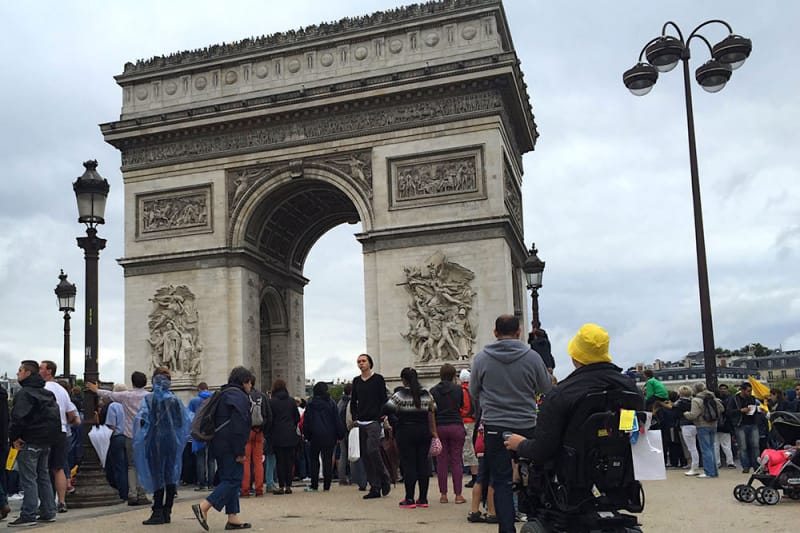
The Arc de Triomphe was commissioned by Napoleon to commemorate his victory against the Russians and Austrians at the Battle of Austerlitz. It is 50 meters tall and is built in a neoclassical style, decorated with allegorical images of France. Underneath the arches lies the Tomb of the Unknown Soldier, who represents the lives lost in both World Wars. Inside the Arc is a small museum, and you can also climb to the top terrace and enjoy one of the best views of Paris.
The Arc de Triomphe is accessible for visitors with disabilities, but you must inform the staff beforehand of your intended visit. The tunnel under the roundabout is not wheelchair-accessible, but you can be dropped off in a special parking bay on the roundabout itself. You can access the museum room via an elevator, but there are 3 steps up to the elevator. The rooftop terrace is also accessible via an elevator with the surface of the terrace containing some shallow steps. There are accessible bathroom facilities and service dogs are permitted.
Musee de l’Orangerie
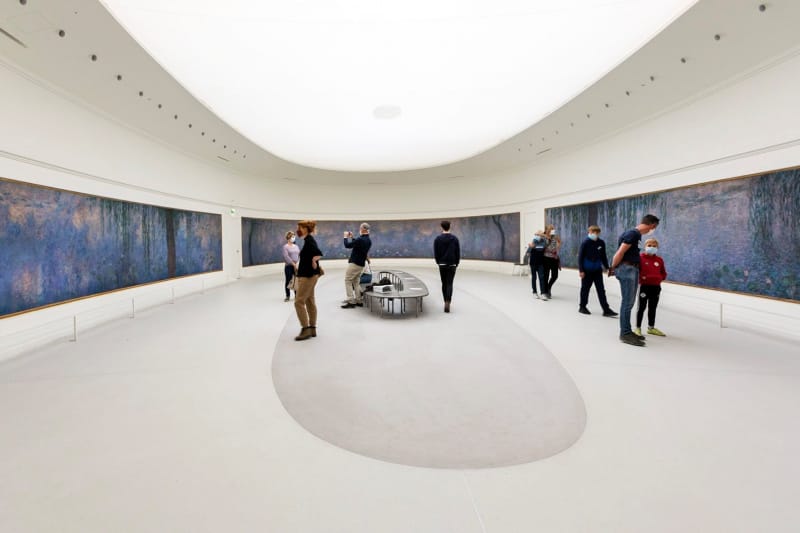
Hosting famous large-scale exhibitions, such as the 8 Water Lilies paintings by Claude Monet, the Musee de l’Orangerie also hosts painters such as Cezanne, Matisse, Picasso, and Renoir. With a curatorship directed to impressionist and post-impressionist art, the building also has a boutique with a large offer of art books and a cafe.
The museum is wheelchair accessible and offers free entrance for people with disabilities. Galleries and exhibition rooms have smooth floors and there is a ramp entrance. All floors are reachable via elevators and accessible restrooms are available. Three wheelchairs and folding chairs are offered, service animals are welcome, and magnetic loops are installed in many points of the museum. Audioguides are also available on both permanent and temporary exhibitions.
Basilica of Sacré Coeur
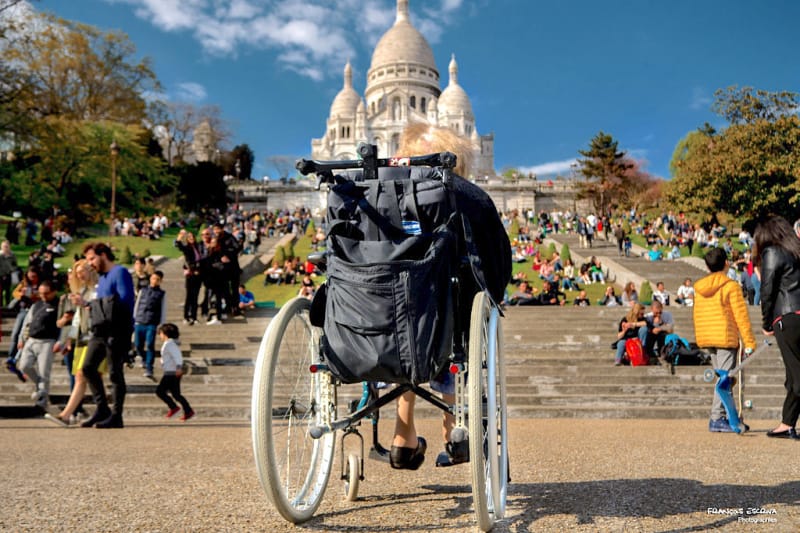
One of the most famous monuments in Paris, the Sacré-Coeur Basilica stands on top of Montmartre offering a panoramic view of the city. There are no guided tours of the Basilica as it is primarily a place of worship, but you are welcome to visit if you respect the guidelines. The dome of the church is open and is a great place to take photos and admire the Parisian skyline.
Although the Basilica is set on top of a steep hill, it is accessible to visitors with reduced mobility who can climb the hill in the funicular. A wheelchair-accessible entrance is available at the side of the Basilica, and the grounds of the Church are mostly paved with smooth cobbles. Accessible parking spots can be found at the rear of the Church, and there are accessible bathrooms onsite. However, as it is a place of worship, service dogs are not permitted. The crypt and the dome are both accessed by sets of stairs and are therefore not accessible for wheelchair users.
Tuileries Garden

With a rich history that includes kings, queens and the French Revolution, Tuileries Garden is located among the world-wide famous Louvre and the iconic Place de la Concorde. This public garden is free, accessible, and a perfect place to relax and gaze at beautifully trimmed gardens.
With an accessible restroom designated for people with disabilities, this garden features several sculptures, paved wheelchair accessible pathways, ample spaces, and service dogs are allowed. This is a great place to rest in between your Paris explorations or simply take a break from the city.
Eiffel Tower

If you go to Paris without seeing the Eiffel Tower, did you really go? The emblematic tower is certainly worth seeing, especially when lit up at night.
Wheelchair access is available via elevators up to the first and second floor. For safety reasons, however, the top is not accessible. The second floor provides spectacular views of the city and many of the popular monuments, including Notre Dame and Grand Palais. You will also find shops and dining options on the second floor, including a Michelin-star restaurant. Accessible pathways, including ramps, are present throughout the park surrounding the tower, allowing everyone to enjoy it without inconvenience.
Orsay Museum
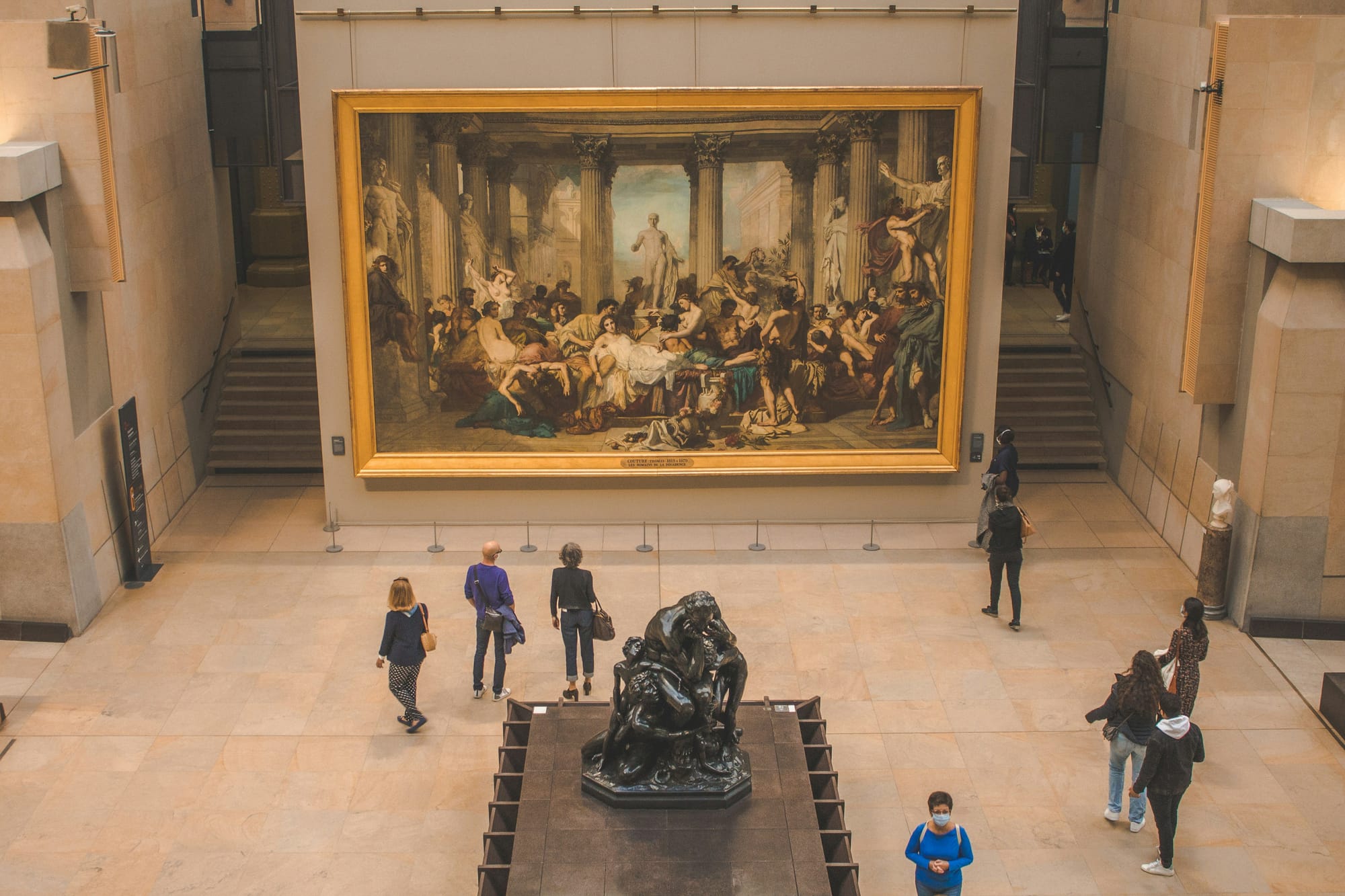
A world-renowned museum in Paris, Orsay Museum is known for having the largest collection of impressionist and post-impressionist artwork in the world. With exhibitions that include many art mediums, the building used to be a train station built for the 1900 Universal Exposition of Paris. This museum hosts artists such as Edgar Degas, Modigliani, and Pierre Bonnard. You could spend hours admiring the many famous pieces of art.
The building is accessible for people with reduced mobility. There are accessible restrooms on-site as well as elevators, access ramps, and automatic doors are available. Guided tours in French Sign Language are offered and audio guides are available with previous reservations. Wheelchairs are offered and service dogs are welcome.
An Evening at the Lido de Paris Cabaret

Spend a magical evening at the Paris Lido, an accessible venue in the heart of the City of Lights set on the famous Champs-Elysees. This historic theater hosts incredible performances, featuring acrobats, magicians, and the Bluebell dancing girls. The unique “Inoubliable” show is a revue of some of the most spectacular shows from the Lido, highlighting the most wonderful moments in the history of the Lido. Shows are also accompanied by wine, champagne, and a dinner prepared by the Lido’s chef, with a 3-course meal and 4 different menu options.
The venue is entirely wheelchair-accessible and can be navigated independently. There are accessible restrooms featuring grab bars and adequate space to move. There are several public transport options available, with metro and bus stops located nearby, as well as a paid public car park.
Champs-Élysées Avenue
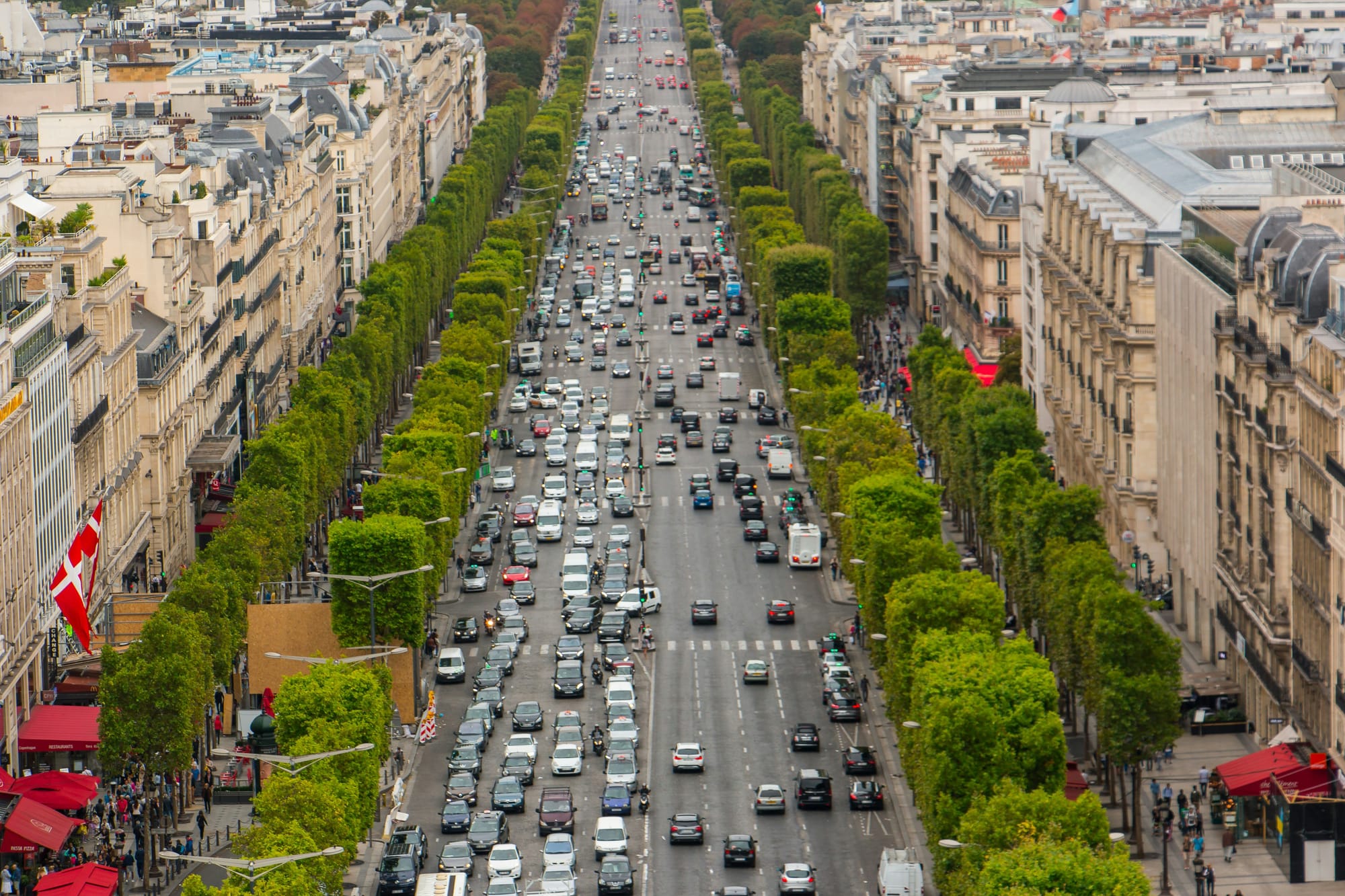
The most well-known avenue in Paris, Champs-Élysées Avenue is a magnificent street located in the 8th arrondissement of the city. It is just over a mile long (1.9 kilometers) and filled with monuments, high-end shopping, restaurants, luxurious hotels and festivities. On the west end is Place Charles de Gaulle, where Arc de Triomphe is located, and Place de la Concorde on the east.
Champs-Élysées Avenue is a cultural hub with cinemas and theater venues along the strip. Throughout the year, there are several premier events and festivities that occur, such as Bastille Day (French National Day) and the finish line for Tour de France cyclists,
With wide and accessible sidewalks, Champs-Élysées Avenue is conducive for pedestrians and wheelchair users to explore Paris' most famous avenue.
Rodin Museum
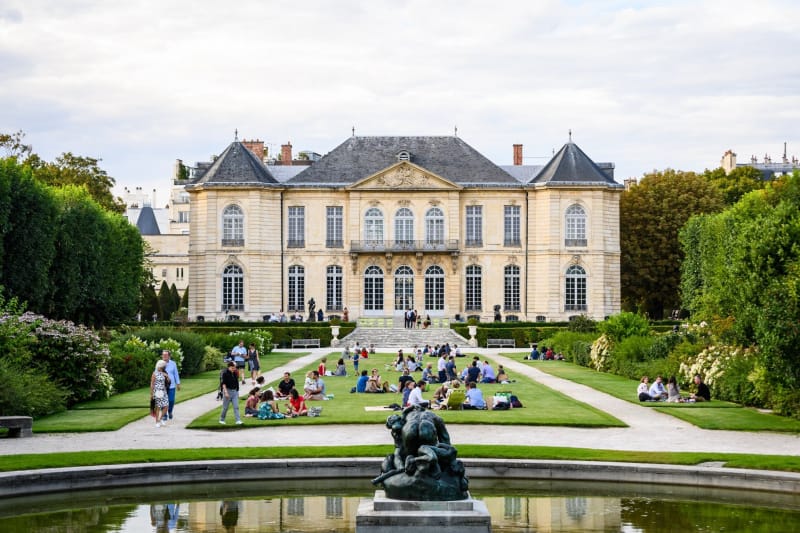
Open since 1919, Mussée Rodin is located in the 7th Arrondissement and honors famed artist Auguste Rodin. A beautiful neoclassical building that used to be a hotel built in 1727, the place also features a large lush garden exhibiting sculptures, a pond, and a cafe. This combination of architecture, art, and nature makes this landmark not only a must-stop place to visit for culture-seekers but also for those who are looking to have a break from the city in the heart of Paris.
The garden has accessible trails and the museum is equipped with access ramps. There are accessible restroom facilities available that function via push-button and automatic doors. Certain works of art are available for tactile explorations. Ask for more information at the visitor center. The ticket desk, cloakroom, gift shop, and audio guide counter have an audio induction loop available. Service dogs are allowed.
Chateau de Versailles
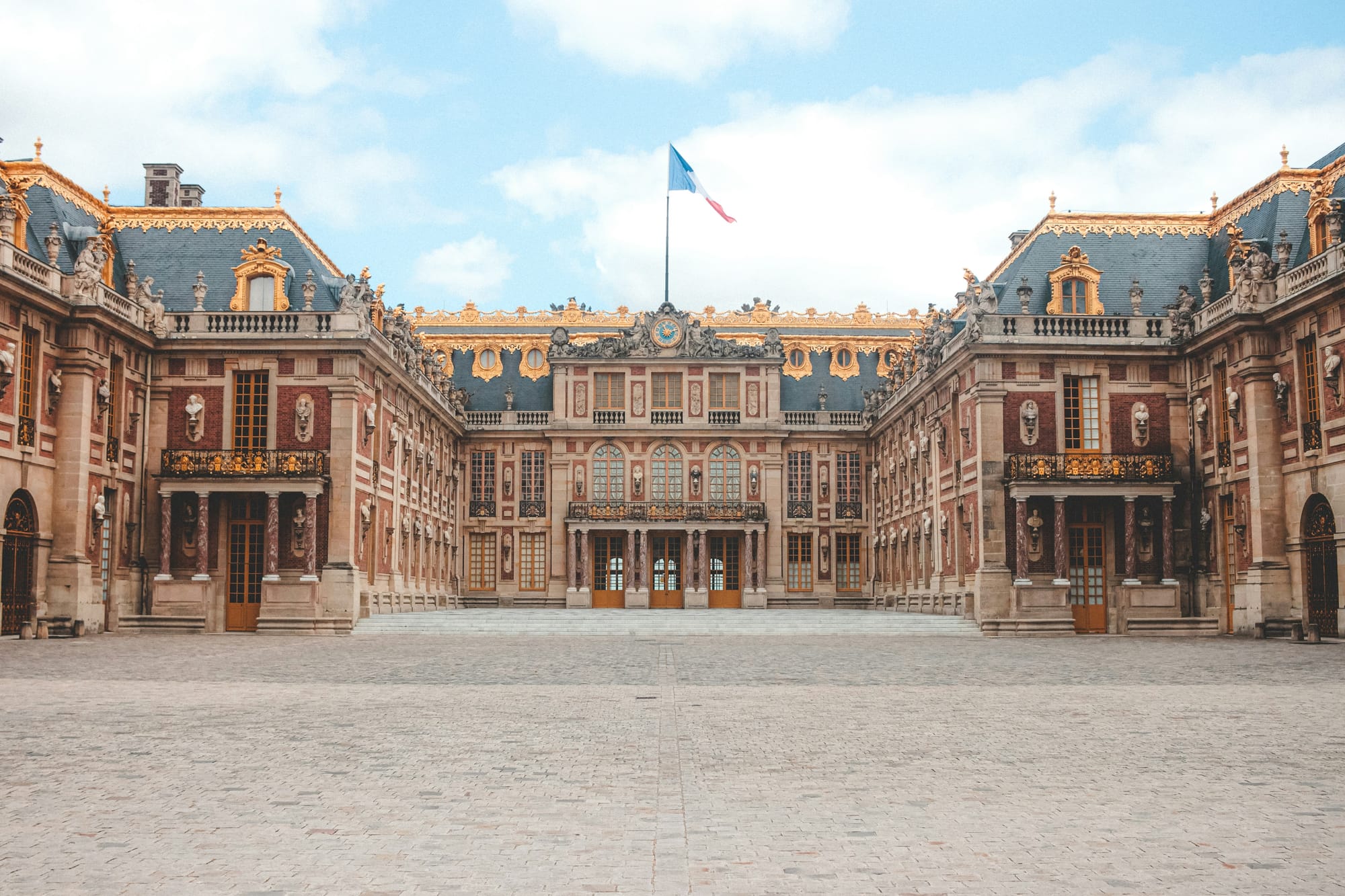
The Palace of Versailles, located 12 miles (19 kilometers) west of Paris, is one of the most renowned and luxurious royal palaces in the world. Originally a humble hunting lodge built by King Louis XIII, it was transformed into a magnificent palace by his son King Louis XIV in the 17th century. The palace, along with its stunning gardens, is a UNESCO World Heritage site and a symbol of the absolute monarchy of the Ancien Régime. The extensive gardens surrounding the palace are a marvel in themselves, featuring meticulously planned geometric patterns, fountains, sculptures, and grand avenues. The gardens are a testament to the French formal garden style.
The Palace of Versailles is accessible for those with limited mobility. All of the areas that are open to visitors are equipped with lifts and accessible restrooms are available throughout the premises. Find more information on accessibility here.
Accessible Tours in Paris
Explore the Quartier Latin with a Local Guide
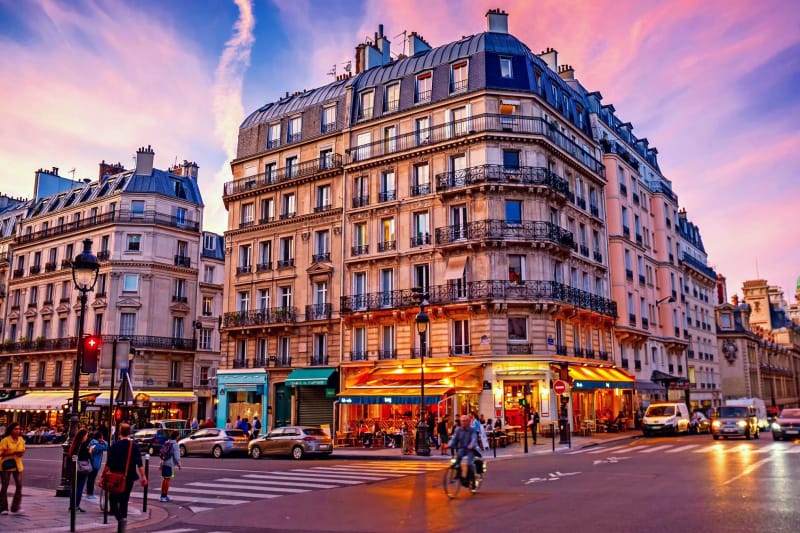
This accessible 90-minute tour will take you on a journey through the Latin Quarter of Paris, a vibrant yet quaint neighborhood that has been home to scholars and writers for centuries. You’ll meet your guide at Place St Michel where you can admire the impressive fountain before setting off along the lively Rue de la Huchette to see the famous Shakespeare and Company bookstore. During this private tour, you’ll also discover famous landmarks such as La Sorbonne, one of Europe’s oldest universities which dates back to the thirteenth century, and the Pantheon, an imposing monument that sits at the top of Montagne Sainte-Geneviève and houses the remains of notable French citizens such as Victor Hugo, Marie Curie and Voltaire.
Some of the Latin Quarter’s streets have narrow sidewalks with metal railings or small steps. Your guide will be able to assist you if required. The tour covers approximately 4.1 km and has gradual elevations as well as cobblestone streets in some places. Accessible bathrooms are available at several stops along the way. Learn more about this tour.
Explore Le Marais with a Local Guide
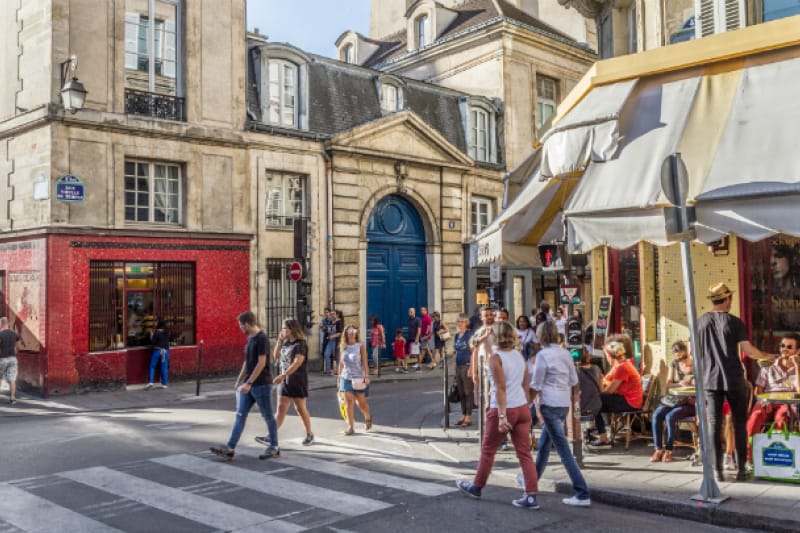
On this private walking tour, you’ll be able to explore the Marais, arguably the trendiest neighborhood in Paris. You’ll meet your expert guide outside Pont Marie Metro Station and from there you’ll set off on a 90-minute journey during which you’ll discover this district’s history, architecture and culture. Highlights of this tour include the impressive Place des Vosges and its fountains, the vibrant Rue des Rosiers which is the heart of the city’s Jewish quarter, and Le Village St Paul, a quaint oasis of calm in this otherwise bustling area.
The tour covers roughly 3.5 km of mostly flat paved streets and some areas have cobblestones or fine gravel. Some of the neighborhood’s sidewalks are very narrow and have small steps in places. Your guide will be able to assist you throughout the tour and accessible bathrooms are available at several locations. Learn more about this tour.
Explore Saint-Germain-des-Prés with a Local Guide
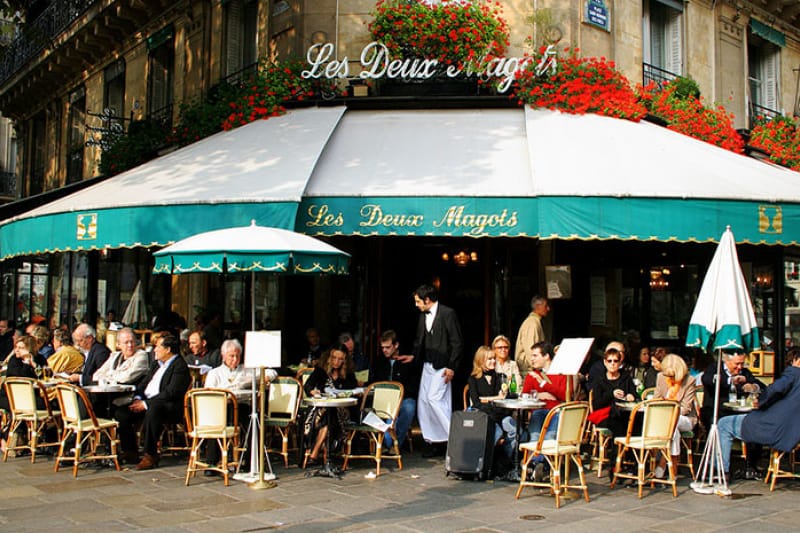
Get to know the Left Bank of the Seine on this fun and engaging accessible tour of Paris’ Saint-Germain-des-Pres, led by a local guide. Saint-Germain-des-Pres is one of the coolest and most historic areas of the city and is packed with galleries, cafes, clubs, trendy boutiques, markets, and arthouse cinemas. Your guide will take you through the narrow streets and courtyard and will tell you stories of the famous people who lived in Saint-Germain-des-Pres, from revolutionaries to artists and philosophers. At the end of the 90-minute tour, you can carry on exploring at your own pace or get a recommendation of a restaurant or bar from your guide.
This tour is accessible to people with disabilities and includes stops with accessible bathroom facilities. Moderate effort is required to walk the 4 km (2.48 mile) length of the tour, but the guide will be available to provide assistance. Learn more about this tour.
Final Thoughts
An accessible trip to Paris is a wonderful destination to choose. With proper planning and a few elements to consider, everyone can have an enjoyable time regardless of physical abilities. Take a look at our accessible resources below to help with planning all things travel.
Accessible Travel Resources:
- Book Hotels and Find Experiences With All the Accessibility Details You Need
- Join Our Accessible Travel Community
- Fill out your accessibility profile (for free) for personalized travel experiences
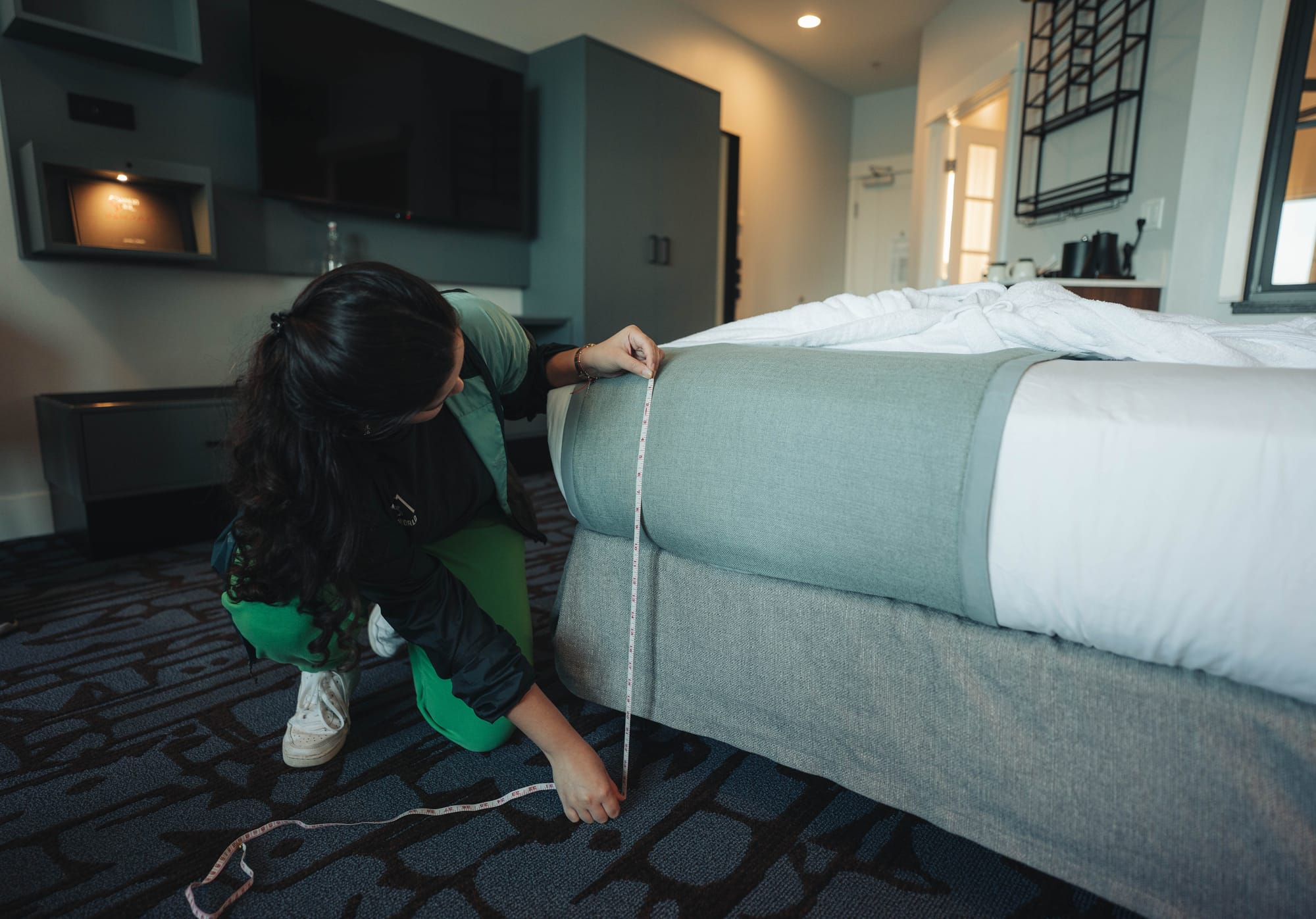
Accessibility That Suits You
detailed accessibility information for a personalized experience
Paris Experiences & Hotels

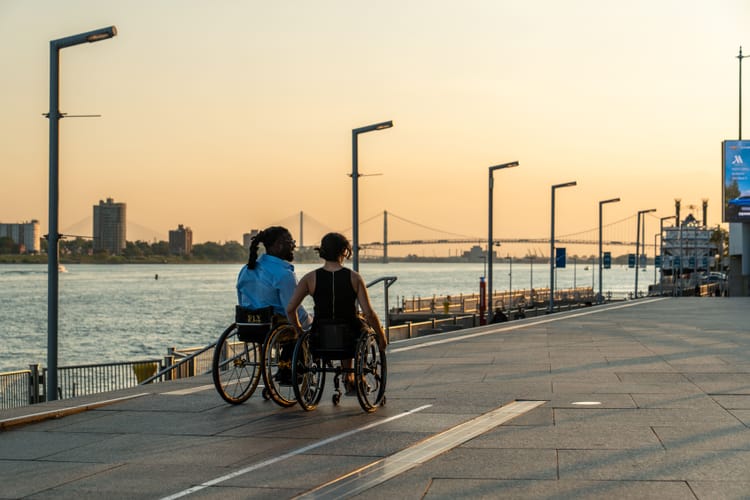
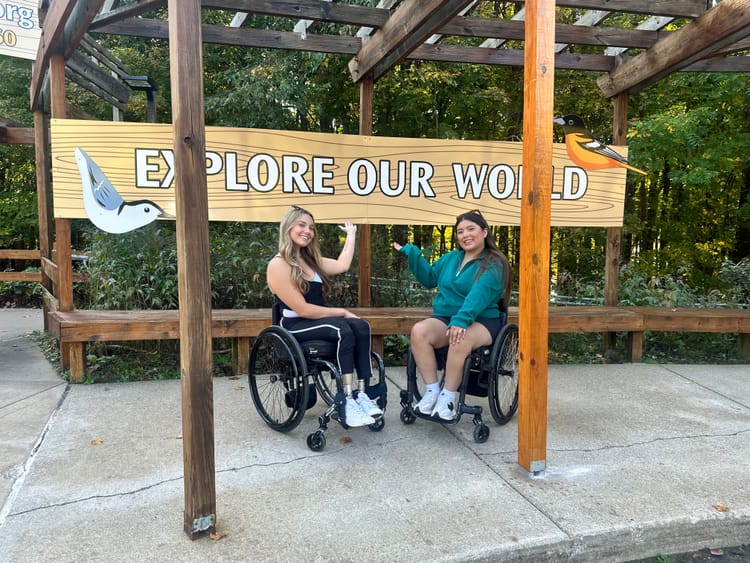
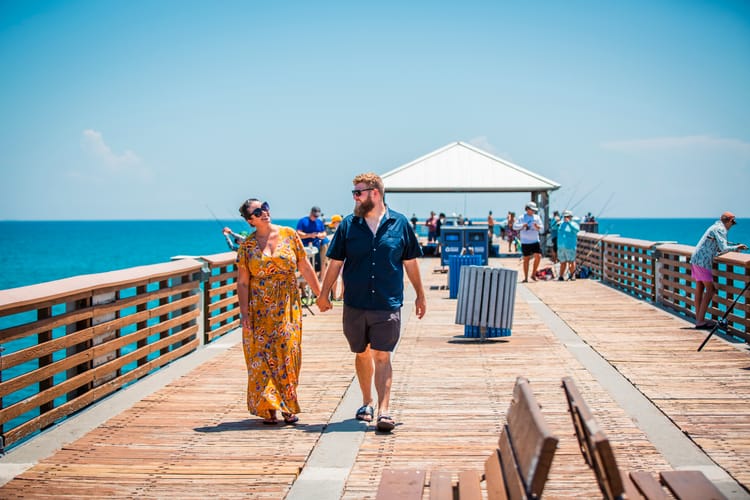
Comments ()